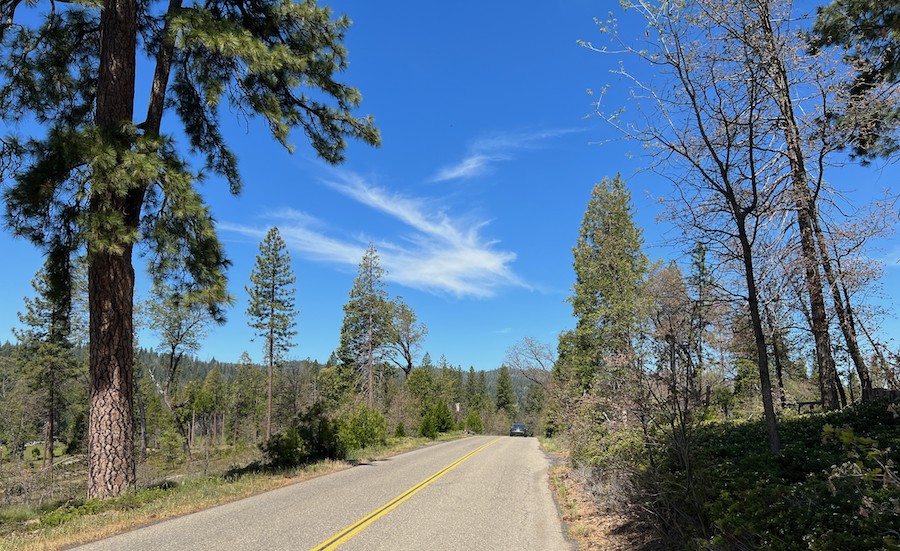How I helped the Office of Emergency Services change their policy on funding the removal of dead trees during the Tree Mortality Disaster.
 This picture was taken on Jerseydale Rd in 2016 during the Tree Mortality Disaster.
This picture was taken on Jerseydale Rd in 2016 during the Tree Mortality Disaster.
 This picture was taken on the same stretch of Jerseydale Rd after the completion of the work mentioned below.
This picture was taken on the same stretch of Jerseydale Rd after the completion of the work mentioned below.
California, as well as other states have an Office of Emergency Services, OES, as do the various counties in California. The role of these organizations is to help with recovery efforts after a disaster such as an earthquake, fire, flood, or hurricane.
In 2015, working with then head of the Mariposa OES, Don Florence, we wanted to get the California OES to help our efforts to mitigate the effects of the Tree Mortality Disaster by funding the removal of dead trees along our roads and around county infrastructure. The problem was that the focus of the California OES was on recovery AFTER a disaster, not during the disaster.
At that point in the Tree Mortality Disaster, trees were dead, but had not yet fallen, had not blocked roads, or fallen on cars, houses, or other buildings. But we knew that many of the dead trees would fall within the next few years, and we wanted to remove them before they could destroy property or injure or kill someone. But Cal OES said essentially, no we have to wait until after the disaster is over, like we do with a fire or flood, and then we can help you recover from that disaster – that is our role – recovery.
A slow-moving disaster like our tree mortality did not fit well into the “recovery after a disaster” framework. But fortunately, I was able to use my contacts at the California State Association of Counties (CSAC) and Don used his contacts within the OES structure; Cal OES ultimately did agree to help fund dead tree removal along our county roads and around our infrastructure under the California Disaster Assistance Act. Under CDAA, Cal OES can reimburse expenditures up to 75% of the recovery costs incurred. Often it is a matter of having the right people talking with the right people at the right level about an issue and policies can change.
The problem then facing the 10 High Hazard Counties was, where do we find the remaining 25% of the recovery costs? None of us had a few million dollars available for that purpose. So, again working with CSAC and coordinating with CAL FIRE, Cal OES and other county supervisors, we were able to convince the Governor to include a $6 Million line item in the 2017/18 state budget. Those funds were distributed to the High Hazard counties under the Local Assistance for Tree Mortality (LATM) framework. Of that $6 Million, $3 Million was divided equally, so each county received $300,000. The remaining $3 Million was apportioned based on the proportion of dead trees in each county. Since Mariposa had one of the highest percentages, we were allocated an additional $498,034 of LATM funding. CAL FIRE calculated we would be able to do $3,192,138 of work to fell and remove dead trees.
In late 2016, Mariposa County signed a contract with Blue Ridge Services (BRS) to manage the tree mortality disaster. BRS was an incredible partner in terms of their strategic approach to tree felling and removal and also in terms of their donation of the equivalent of $160,579.00 in consulting hours. That money served as match for reimbursements under the CDAA and resulted in over $917,000 in additional funds from Cal OES under the CDAA. As BRS notes in their Report of Completion, “In the end, through good management and donations by BRS, the County was able to receive $5,426,422.14 in tree mitigation work at a cost to the County of less than $92,588,89.”

